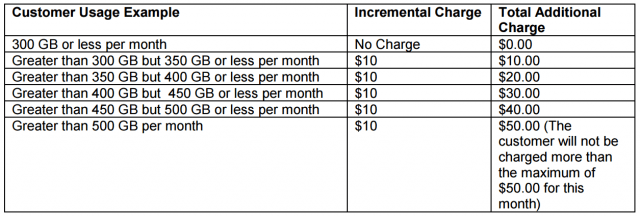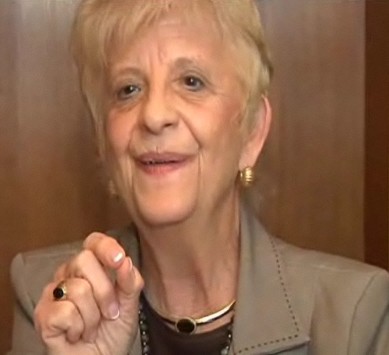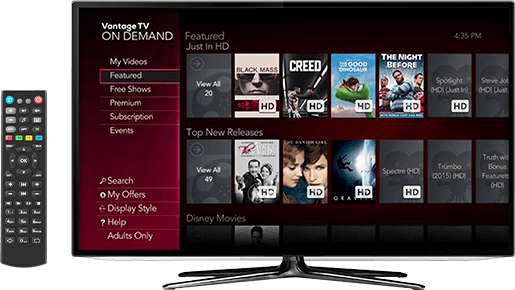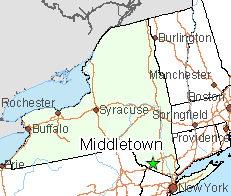 CenturyLink will begin a usage-based billing trial in Yakima, Wa., starting July 26 that will combine usage caps with an overlimit fee on customers that exceed their monthly usage allowance. The trial in Washington state may soon be a fact of life for most CenturyLink customers across the country, unless customers rebel.
CenturyLink will begin a usage-based billing trial in Yakima, Wa., starting July 26 that will combine usage caps with an overlimit fee on customers that exceed their monthly usage allowance. The trial in Washington state may soon be a fact of life for most CenturyLink customers across the country, unless customers rebel.
Already at a speed disadvantage with its cable competitors, CenturyLink will likely alienate customers with a new 300GB usage cap on DSL customers who can manage speeds up to 7Mbps, and 600GB for those lucky enough to exceed 7Mbps. Customers will be given a browser-injected warning when they reach 65% and 85% of their allowance. If a customer exceeds it, they will have overlimit fees forgiven twice before the usual de facto industry overlimit penalty rate of $10 for 50 additional gigabytes will be added to their bill, not to exceed $50 in penalties for any billing cycle.
DSL Reports received word from readers in Yakima they had the unlucky privilege of serving as CenturyLink’s first test market for hard caps and overlimit fees, and was the first to bring the story to the rest of the country.
CenturyLink hasn’t wanted to draw much attention to the usage-based billing change, quietly adjusting their “excessive usage policy FAQ” that takes effect on July 26. But it has begun directly notifying customers who will be enrolled in the compulsory trial.
“Data usage limits encourage reasonable use of your CenturyLink High Speed Internet service so that all customers can receive the optimal internet experience they have purchased with their service plan,” states the FAQ.
But counterintuitively, CenturyLink will exempt those likely to consume even more of CenturyLink’s resources than its low-speed DSL service allows by keeping unlimited use policies in place for their commercial customers and those subscribed to gigabit speed broadband.
CenturyLink’s justification for usage caps with customers seems to suggest that “excessive usage” will create a degraded experience for other customers. But CenturyLink’s chief financial officer Stewart Ewing shines a light on a more plausible explanation for CenturyLink to slap the caps on — because their competitors already are.
“Regarding the metered data plans; we are considering that for second half of the year,” Ewing told investors on a conference call. “We think it is important and our competition is using the metered plans today and we think that exploring those starts and trials later this year is our expectation.”

CenturyLink’s new overlimit penalties (Image courtesy: DSL Reports)
In fact, CenturyLink has never acknowledged any capacity issues with their broadband network, and has claimed ongoing upgrades have kept up with customer usage demands. Until now. On the west coast, CenturyLink’s competitors are primarily Comcast (Pacific Northwest) and Cox Communications (California, Nevada, Arizona). Both cable operators are testing usage caps. In many CenturyLink markets further east, Comcast is also a common competitor, with Time Warner Cable/Charter present in the Carolinas. But in many of the rural markets CenturyLink serves, there is no significant cable competitor at all.

Usage Cap Man is back, protecting high profits and preserving the opportunity of charging more for less service.
As Karl Bode from DSL Reports points out, for years CenturyLink has already been collecting a sneaky surcharge from customers labeled an “internet cost recovery fee,” supposedly defraying broadband usage and expansion costs. But in the absence of significant competition, there is no reason CenturyLink cannot charge even more, and also enjoy protection from cord-cutting. Customers who use their CenturyLink DSL service to watch shows online will face the deterrent of a usage cap. Customers subscribed to CenturyLink’s Prism TV will be able to access many of those shows on-demand without making a dent in their usage allowance.
For years, American consumers have listened to cable and phone companies promote a “robust and competitive broadband marketplace,” providing the best internet service money can buy. But in reality, there is increasing evidence of a duopoly marketplace that offers plenty of opportunities to raise prices, cap usage, and deliver a substandard internet experience.
As Stop the Cap! has argued since 2008, the only true innovations many phone and cable companies are practicing these days are clever ways to raise prices, protect their markets, and cut costs. Consumers who have experienced broadband service in parts of Asia and Europe understand the difference between giving customers a truly cutting-edge experience and one that requires customers to cut other household expenses to afford increasingly expensive internet access.
We recommend CenturyLink customers share their dislike of CenturyLink’s style of “innovation” in the form of a complaint against usage caps and usage-based billing with the FCC. It takes just a few minutes, and adding your voice to tens of thousands of Americans that have already asked the FCC to ban usage caps and usage pricing will keep this issue on the front burner. It will help strengthen our case that providers must stop treating internet usage as a limited resource that has to be rationed to customers. Wall Street believes the FCC has given a green light to usage caps and usage pricing, and the risk of attracting regulator attention by imposing higher broadband prices on consumers is pretty low. We need to change that thinking so analysts warn providers against being too greedy, out of fear the FCC will impose a regulatory crackdown.


 Subscribe
Subscribe The community of Pinetops, N.C. has
The community of Pinetops, N.C. has 

 Pinetops offers proof of the obscenity of bought-and-paid-for-politicians supporting corporate protectionism that harms people, harms education, harms jobs, and leaves rural communities with no clear path to the digital economy of the 21st century. Legislation like H129, which continues to be enforced in more than a few U.S. states, needs to be pre-empted nationwide or even better repealed by state legislators.
Pinetops offers proof of the obscenity of bought-and-paid-for-politicians supporting corporate protectionism that harms people, harms education, harms jobs, and leaves rural communities with no clear path to the digital economy of the 21st century. Legislation like H129, which continues to be enforced in more than a few U.S. states, needs to be pre-empted nationwide or even better repealed by state legislators. Altice’s ongoing efforts to cut expenses and boost profits at Suddenlink will cost an unspecified number of call center workers their jobs in three states and customers will soon pay a fee to receive their cable bill in the mail.
Altice’s ongoing efforts to cut expenses and boost profits at Suddenlink will cost an unspecified number of call center workers their jobs in three states and customers will soon pay a fee to receive their cable bill in the mail. This summer Suddenlink is also continuing incremental rate hikes for customers not already subject to them. Parts of North Carolina are the latest to face
This summer Suddenlink is also continuing incremental rate hikes for customers not already subject to them. Parts of North Carolina are the latest to face 
 The European Union believes every home in the bloc should have ready access to at least 100Mbps broadband speeds within the next decade.
The European Union believes every home in the bloc should have ready access to at least 100Mbps broadband speeds within the next decade. A potential issue for Brussels is dealing with one of Europe’s most powerful telecom companies – Germany’s Deutsche Telekom, which wants to use vectoring technology to improve copper-based DSL service in Germany instead of upgrading to optical fiber technology.
A potential issue for Brussels is dealing with one of Europe’s most powerful telecom companies – Germany’s Deutsche Telekom, which wants to use vectoring technology to improve copper-based DSL service in Germany instead of upgrading to optical fiber technology. If you live in parts of the Hudson Valley (N.Y.) or Ohio where Frontier Communications provides phone service, Vantage TV may be coming to your neighborhood soon.
If you live in parts of the Hudson Valley (N.Y.) or Ohio where Frontier Communications provides phone service, Vantage TV may be coming to your neighborhood soon. Vantage TV offers up to 300 channels typically bundled with phone and internet service. Customers are provided a “total-home DVR” with 1TB of storage that can record up to six shows at the same time and played back on up to four wireless cable boxes attached to different televisions. An upgraded version 3.0 of Ericsson’s Mediaroom platform offers advanced set-top box features like improved visual search and the ability to watch up to four channels at once in a mosaic. Another feature lets customers bring up a small video screen showing another channel, useful if you are channel surfing during an ad break.
Vantage TV offers up to 300 channels typically bundled with phone and internet service. Customers are provided a “total-home DVR” with 1TB of storage that can record up to six shows at the same time and played back on up to four wireless cable boxes attached to different televisions. An upgraded version 3.0 of Ericsson’s Mediaroom platform offers advanced set-top box features like improved visual search and the ability to watch up to four channels at once in a mosaic. Another feature lets customers bring up a small video screen showing another channel, useful if you are channel surfing during an ad break. Connecticut, in contrast, is served with a mix of fiber and old copper wiring that has been in place for decades, since the days the state was served by the independent Southern New England Telephone Company. Learning how to deliver reasonable video quality over copper wires in Connecticut gave Frontier experience to go ahead with targeted upgrades that can boost broadband speeds and deliver HD video over an internet connection as low as 2.6Mbps in other states.
Connecticut, in contrast, is served with a mix of fiber and old copper wiring that has been in place for decades, since the days the state was served by the independent Southern New England Telephone Company. Learning how to deliver reasonable video quality over copper wires in Connecticut gave Frontier experience to go ahead with targeted upgrades that can boost broadband speeds and deliver HD video over an internet connection as low as 2.6Mbps in other states.